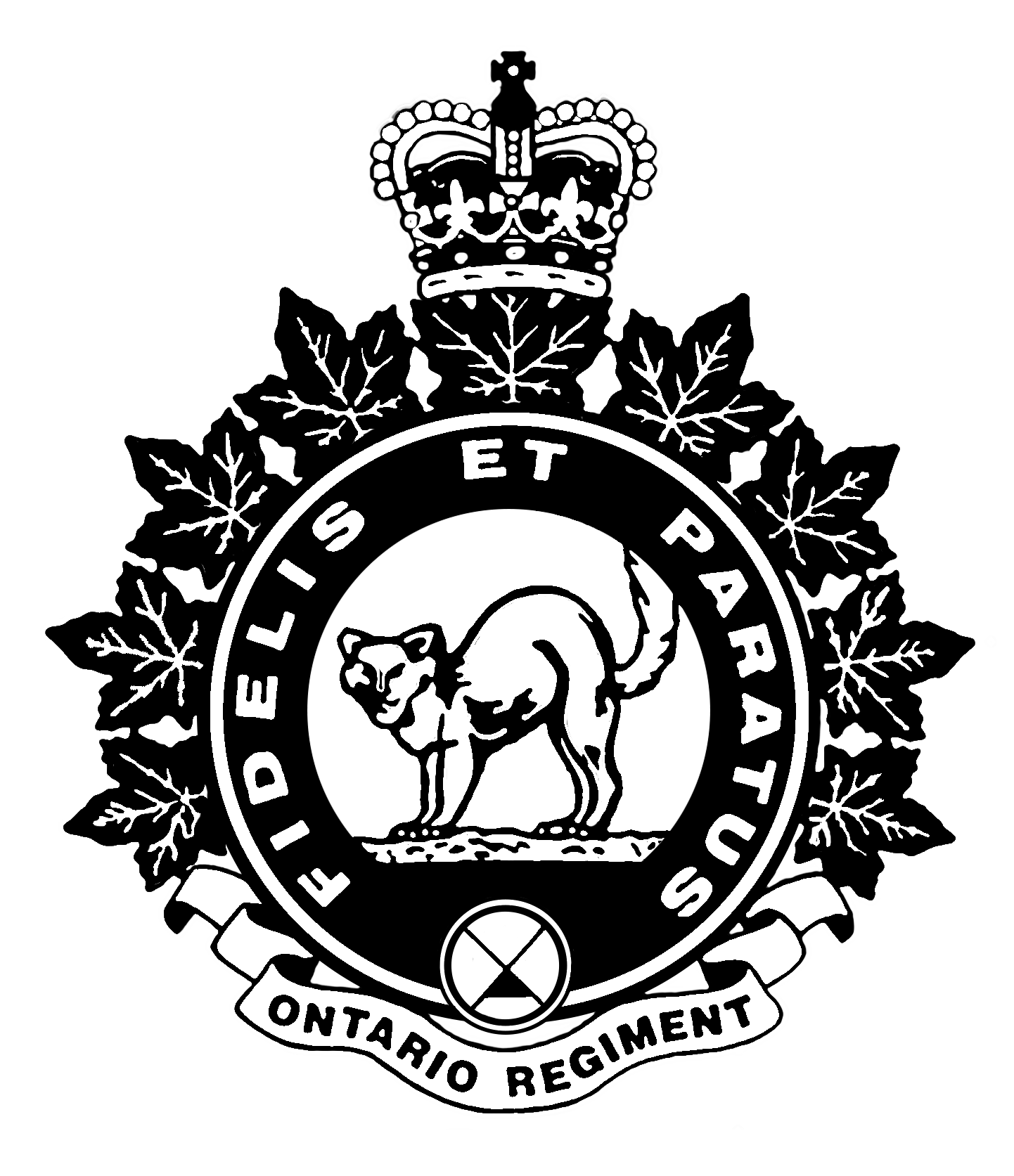Vickers Mark VIB
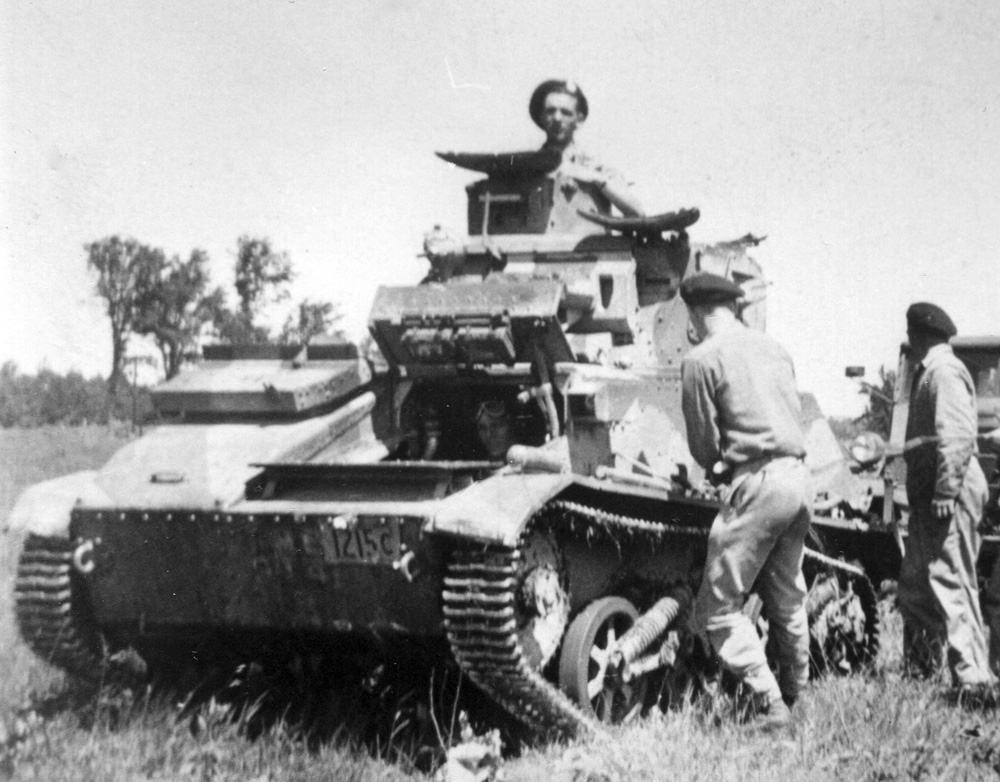
Canada purchased two Vickers Mark VIB light tanks in 1938 and twelve more in 1939. The Ontario Regiment trained on this tank at their 1939 summer camp, just prior to the outbreak of the war. When the Ontarios arrived at Camp Borden in late May of 1940, three of these tanks were assigned to them.
The Mark VIB was armed with a Vickers .5 inch machine gun and Vickers .303 inch machine gun. It carried a crew of three – commander, gunner and driver. British experience with the Mark VIB early in the war demonstrated that it was no longer a front line tank.
This training had only barely started when it was interrupted for several weeks when the Ontarios were detailed to guard German PoWs in northern Ontario. By mid-August the Regiment was back at Camp Borden and the training program was resumed.
Renault M1917
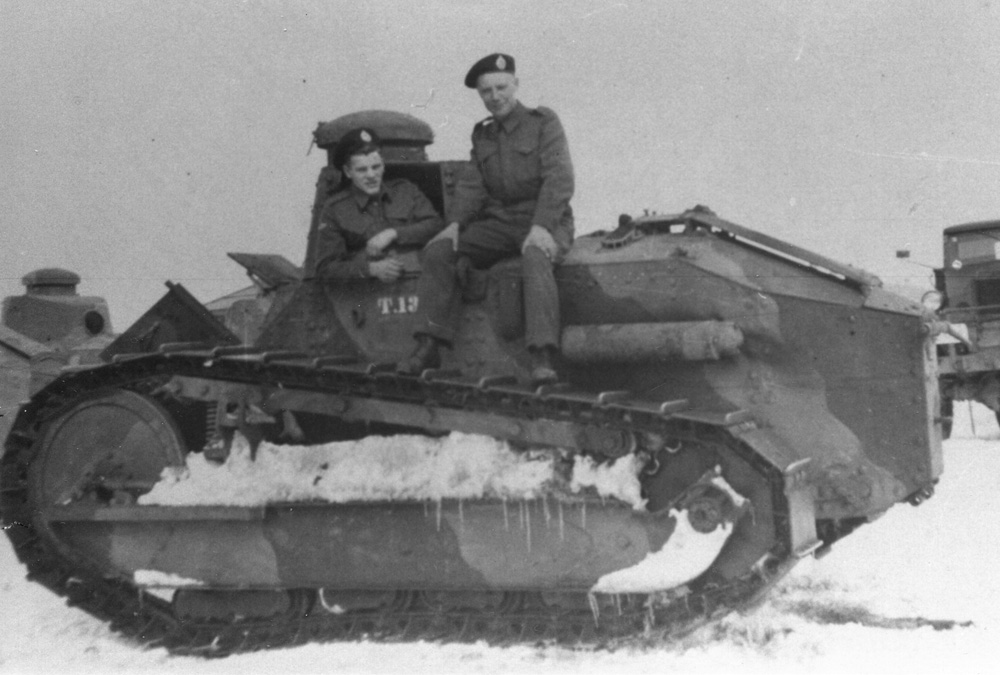
The M1917 was an American-built version of the French FT-17. These First World War relics arrived at Camp Borden in October, 1940. Forty were assigned to the Ontario Regiment and they were used to learn the basics of armoured warfare.
The M1917 was armed with either a 37mm main gun or .30 calibre machine gun. It had a crew of two – the commander and the driver.
Training on the M1917 continued until the spring of 1941 when the focus changed to preparing to move overseas.
Both the Mark VIB and M1917 were obsolete but they were still valuable for training. The Canadian government was still considering the extent of its contribution to the war and was not open to purchasing modern tanks yet. At minimum, the Ontarios could train on an actual armoured vehicle and experience all the challenges that go with it – commanding, driving, basic gunnery, engine and track maintenance, etc.
Churchill
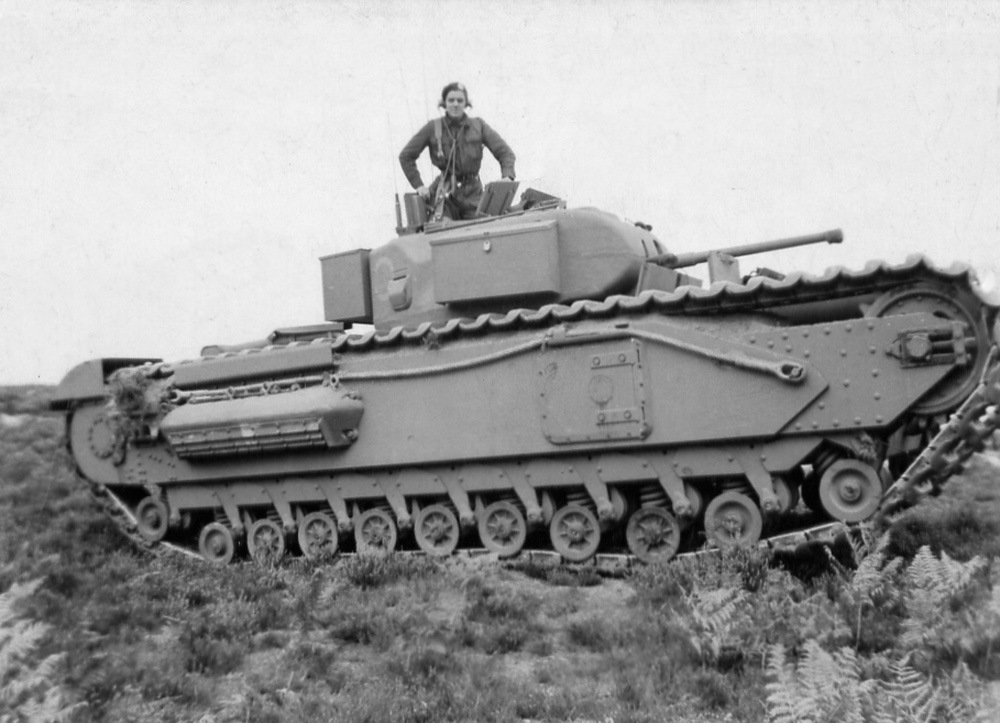
Within a few days of getting settled into their camp on the edge of Salisbury Plain, UK in early July 1941, the Ontarios got their hands on their first modern tank – the Churchill Mark II.
These Churchills were delivered direct from the Vauxhall Motors factory. The other two regiments of the 1st Canadian Army Tank Brigade were initially issued Matilda tanks. The Churchill was a new design and the Ontarios essentially became a research and testing arm of Vauxhall. A representative from Vauxhall Motors was assigned to Brigade headquarters to collect feedback on the tank’s performance.
More Churchills arrived at the Regimental lines in the following weeks, including some Mark I models. Over the next several months the Ontarios gave their tanks a good work-out in various training exercises. The Churchills broke down regularly at first and were a constant source of aggravation for their crews. The Churchill’s dependability increased over time as the information gathered by the Ontarios was fed back to Vauxhall and incorporated into subsequent Marks.
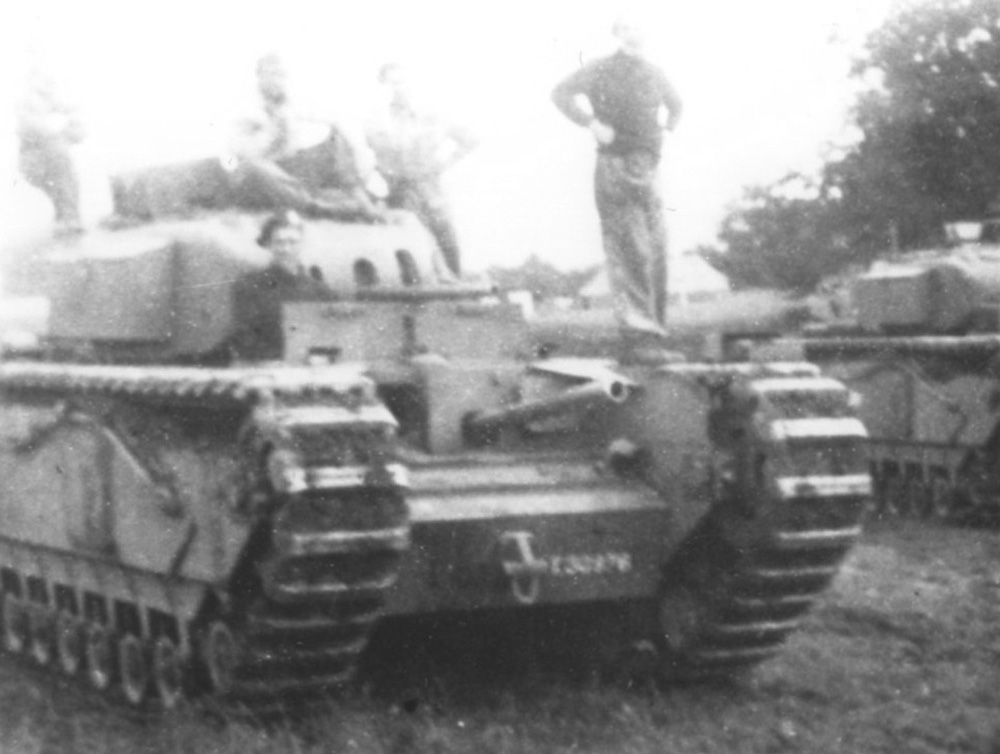
The Mark I was armed with a 2-pounder in the turret and co-axial Besa 7.92mm machine gun. It also had a 3 inch howitzer in the forward hull. The Mark II swapped out the hull howitzer for another Besa MG. The Mark III was up-gunned by replacing the 2-pounder with a 6-pounder gun as the main armament. The final version used by the Ontarios was the Mark IV, which was quite similar to the Mark III but incorporated numerous changes to improve the mechanical reliability. All versions of the Churchill carried a five-man crew: commander, gunner, loader, driver and assistant driver / bow gunner.
In mid-May 1942 the Mark I and Mark II tanks began to be replaced with the Mark III. Churchill Mark IV tanks arrived in November 1942. Despite newer models arriving, the Regiment still held on to a few Mark 1s. Exercise Spartan, held in late February and early March, 1943 was the Regiment’s first chance to use their Mark IVs in the field and the new model proved much more reliable than earlier Marks.
There was a period of overlap in early April 1943 when the Regiment held a full complement of Churchills, while receiving their new Ram tanks. The majority of the Churchills were turned in during the first week of April. “B” Squadron held on to their Churchills longer than the other squadrons because they were employed at the School of Infantry at Catterick. These tanks were finally turned over to the British Army in mid-May, 1943.
Ram II
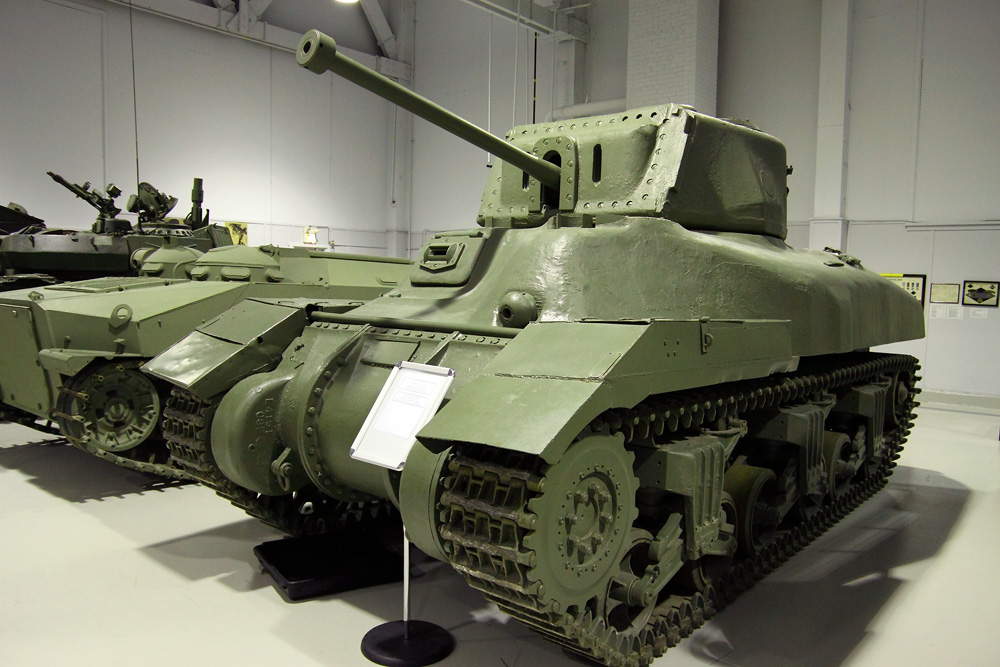
The Ontario Regiment’s time with the Ram tank was very brief – only a few weeks. The Regiment received its first Rams in late March 1943, with more Rams arriving in early April.
The Ram was a Canadian tank, built at the Montreal Locomotive Works. It used the drive components of the American M3 tank but had a Canadian-designed upper hull and turret. The Ram II was armed with a 6-pounder gun as main armament. Secondary armament consisted of two Browning .30 calibre machine guns – one co-axial to the main gun and the second in the front of the hull. The Ram had a five-man crew: commander, gunner, loader, driver and assistant driver.
The Regiment familiarized themselves with the Ram with conversion courses for gunnery and driving. They travelled to the ranges at Minehead, Somerset for live firing beginning on 22 April. There was some disappointment among the ranks of the Ontarios at receiving the Ram because they had seen the Churchill evolve into a combat-ready tank.
While still on the gunnery range in late April, the Ontarios began taking delivery of their first Sherman tanks. The Rams that were still at Worthing, Sussex (Regimental HQ at the time) were returned to Ordnance around 6 May (the war diary is not specific), while the tanks that were used on the firing range at Minehead were left in place and turned over to the 25th Canadian Tank Delivery Regiment.
Sherman
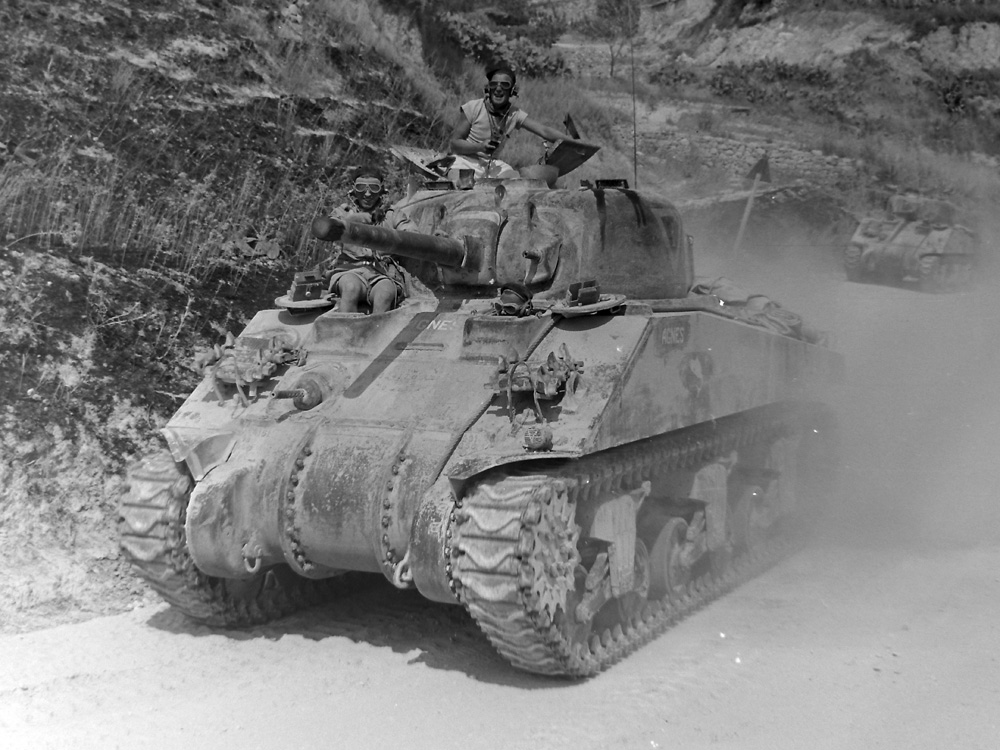
The Sherman tank is the most iconic vehicle used by the Ontario Regiment during the Second World War. It was used throughout the battles in Sicily, Italy and Northwest Europe.
The first Shermans were taken on regimental charge in late April, 1943 and more tanks arrived in early May. This presented a unique situation in that the Regiment had three different tanks for a few days in early May. There were the “B” Squadron Churchills at the School of Infantry noted above, the Rams on the range at Minehead and the first few Shermans.
The crews were given conversion training on their new tank and went to the gunnery ranges at Kirkcudbright, Scotland to practice firing the main gun. As each squadron completed its firing, the tanks were painted tan and then water-proofed in preparation for the coming sea journey and seaborne landing.
By far, the most common model used by the Ontarios was the M4A4 Sherman (Sherman V in British nomenclature). It was armed with a 75mm main gun and a co-axial Browning .30 calibre machine gun. There was another Browning MG in the front of the hull, operated by the co-driver / bow gunner. The Sherman had a five-man crew: commander, gunner, loader, driver and co-driver.
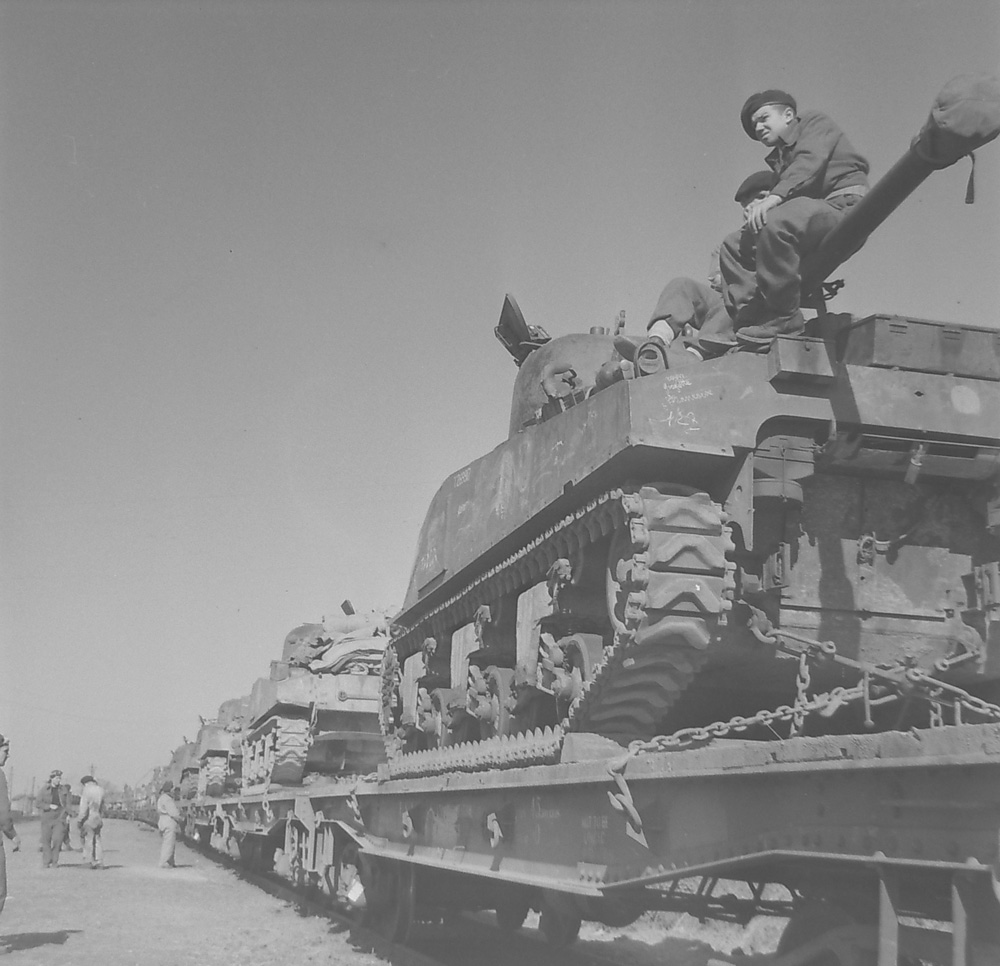
A February 1945 document indicated that each of the three fighting squadrons had 16 Shermans and Regimental Headquarters had three.
The Ontarios used other Sherman models as well. In early December 1944 the Regiment received four Sherman Firefly tanks. This version used the same Sherman hull and turret (with some modifications) but mounted the more powerful, long-barreled 17-pounder main gun. It was too late to see action in Italy as the war was on pause due to winter. Gunnery training took place with these tanks. Twenty more Fireflies were issued to the Ontarios in March 1945 after the Regiment arrived in Belgium. They were assigned two per troop and put to good use in the final days of the war during the liberation of the Netherlands.
A rarer version of the Sherman used by the Ontarios was the Sherman IB, armed with a 105mm howitzer. Six were issued to the Regiment in mid-December 1944. There is very little mention in the war diary about how they were employed, other than for conversion training. They were returned to the 25th Armoured Delivery Regiment at the end of January 1945.
There were two Sherman V Armoured Recovery Vehicles held by the Light Aid Detachment. As the name suggests, this was a special version of the Sherman tank, built on the same chassis as the gun tanks, but used to recover damaged armoured vehicles. The American designation for this vehicle was M32B4.
A September 1945 report indicated that 253 Sherman tanks had gone through the Regiment since 16 August 1943. Of these, 44 were battle casualties, 14 had brewed up (destroyed by fire), one had been captured and 63 were turned in at the end of the war. The remaining 131 were listed as “uncertain”, which probably means that they were rotated out due to mechanical issues and replaced with a different tank.
With the end of the war in May 1945 the Regiment had no need for tanks. They were cleaned up, painted and turned over to Ordnance on 18 June 1945.
M3A3 Stuart Recce

In late April, 1944 ten turretless M3A3 Stuart light tanks arrived at the Regiment to replace the Universal Carriers in the reconnaissance role. In place of the usual turret, a Browning .50 calibre machine gun was mounted on the turret ring. A Browning .30 calibre machine gun could also be mounted. This tank was nicknamed “Honey” in British service.
The Ontario Regiment normally held 11 Stuarts, all in Headquarters Squadron. Ten vehicles carried the armament noted above and one was unarmed for the use by the Medical Officer.
The post-war vehicle report noted above states that 27 Stuarts came through the Regiment. Only one had brewed up. Twenty-two were turned into Ordnance at the end of the war, twice the normal number held by the Regiment.
Rod Henderson
Rod Henderson is the Regimental Historian of the Ontario Regiment. He served as a Sergeant in the Regiment and is the author of “Fidelis Et Paratus: The History of The Ontario Regiment RCAC”.

